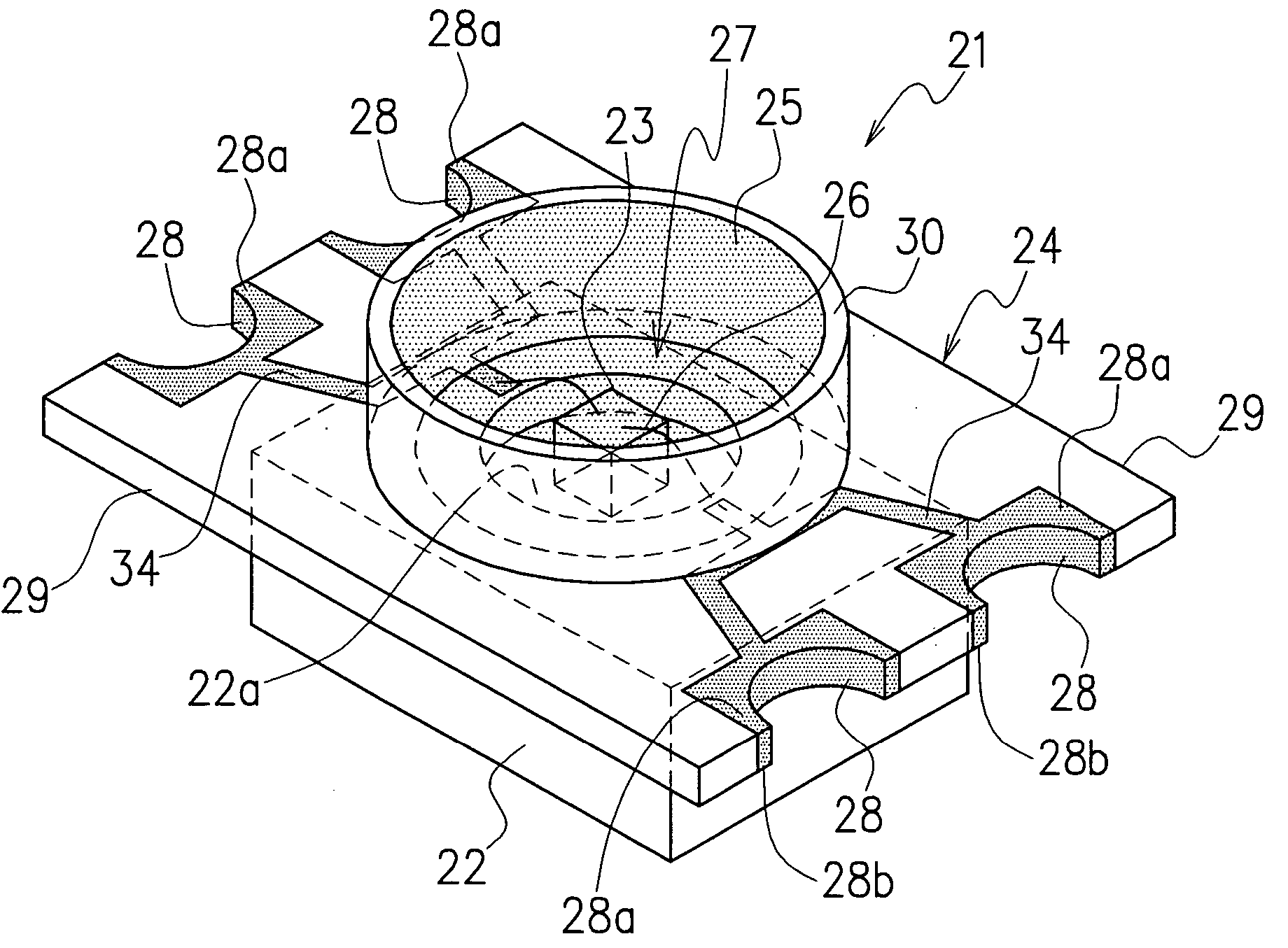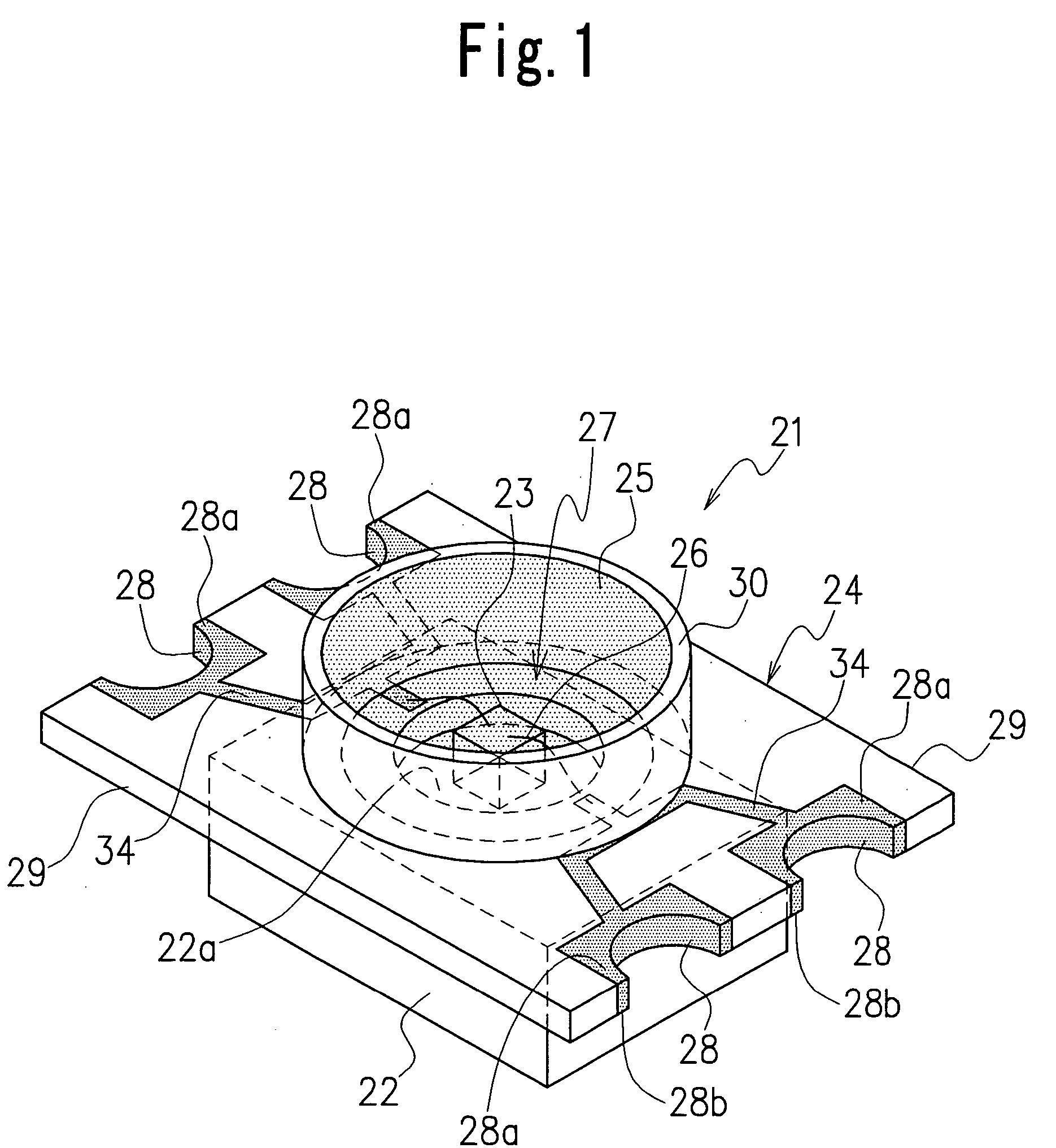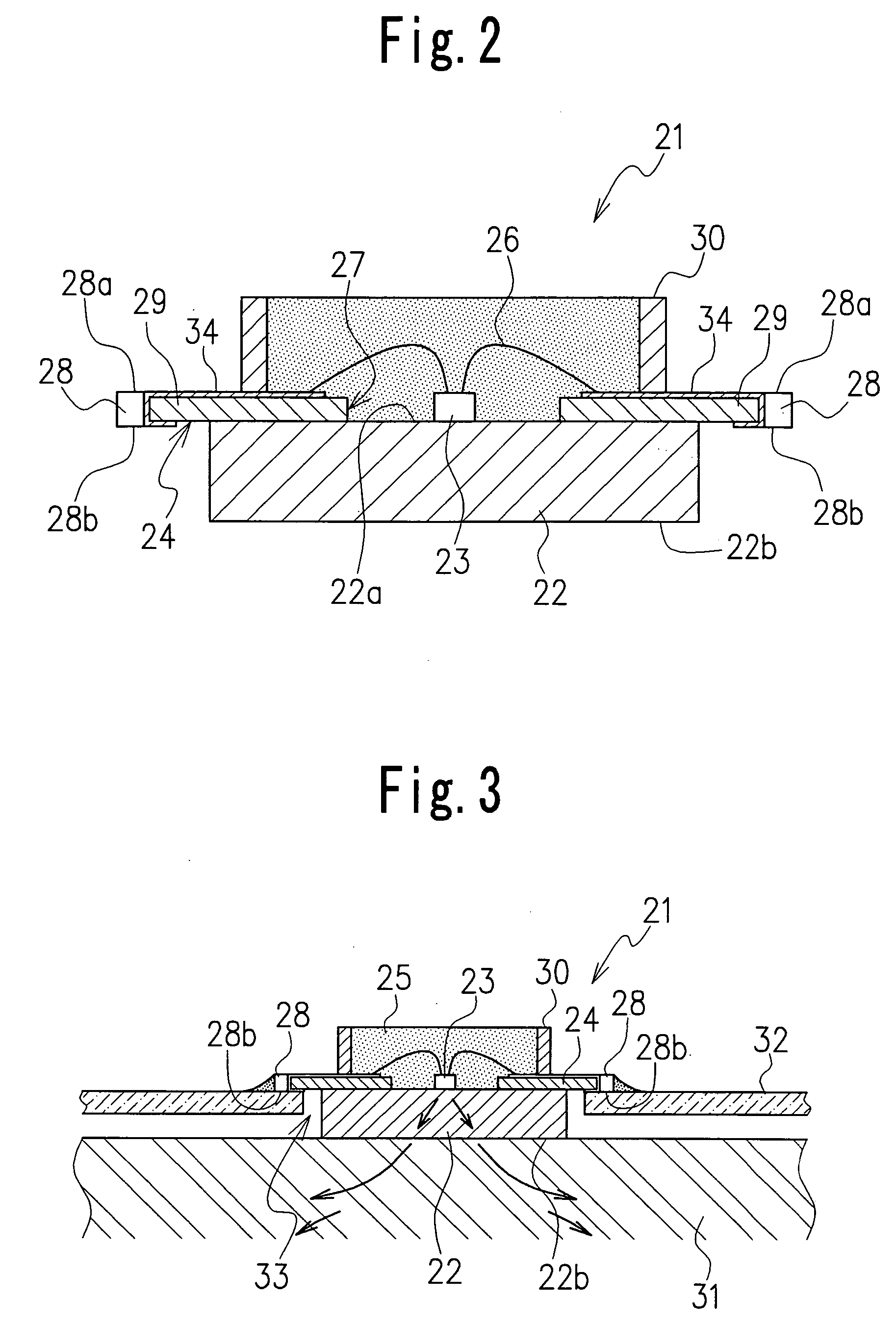Light-emitting diode
- Summary
- Abstract
- Description
- Claims
- Application Information
AI Technical Summary
Benefits of technology
Problems solved by technology
Method used
Image
Examples
first embodiment
[0026]FIG. 1 and FIG. 2 show an LED as the invention. This LED 21 comprises a base 22 having high thermal conductivity; at least one LED element 23 fixed at an almost central part of the base 22; an LED printed circuit board 24 mounted on the upper surface of the base 22 to surround the LED element 23; and a light-transmitting resin material 25 sealing the LED element 23.
[0027] The base 22 is formed from a material with high thermal conductivity, such as metal materials including copper, copper alloy, aluminum and aluminum alloy, to enhance the heat dissipating effect. The base 22 provides a surface 22a on which the LED element 23 is to be die-bonded. The underside of the base 22 forms a heat dissipating surface 22b that releases heat by making contact with, for instance, a frame of another electronic device wherein the LED is used. For an increased heat dissipating effect, it is preferable that the heat dissipating surface 22b be widened. It is therefore effective to form the base ...
second embodiment
[0038]FIG. 5 shows another LED as this invention. In the LED 41, an LED element 43 has a pair of element electrodes formed on each of the upper and lower surfaces of an LED element 43, respectively. A sub-mount substrate 44 is placed on the mounting surface 22a of the base 22 and the element electrode on the underside of the LED element 43 is die-bonded to the upper surface of this sub-mount substrate 44. A bonding wire 26a is provided to connect the element electrode on the upper surface of the LED element 43 to the electrode patterns formed on the printed circuit board 24. The sub-mount substrate 44 is formed from, for instance, an aluminum-based ceramics or silicon substrate for an enhanced heat dissipation effect. Two patterns are formed on the surface of the sub-mount substrate 44. One is a die bond pattern, on which the element electrode on the underside of the LED element 43 is surface-mounted, and the other is a lead-out pattern extended from the die bond pattern, which is c...
fourth embodiment
[0041]FIG. 7 shows yet another LED as this invention. The LED 61 has LED elements 63a, 63b, 63c, which emit three primary colors of light—red, blue and green—respectively, mounted on a mounting surface 62a of a base 62. Through-holes constructed of anode electrodes (A1-A3) and cathode electrodes (K1-K3), that are assigned to these LED elements 63a, 63b, 63c, are formed at the two facing ends such as the left and right ends of the protruding portion 69 of a printed circuit board 64. The printed circuit board 64 has a circular hole 67 which exposes the LED elements 63a, 63b, 63c, and a seal frame 70 is provided to surround the LED elements 63a, 63b, 63c. This LED 61 can be made to emit a variety of colors of light by adjusting the voltage applied to the anode electrodes (A1-A3) and the cathode electrodes (K1-K3). The large amount of heat produced by the plurality of LED elements can be effectively dissipated through the base 62.
PUM
 Login to View More
Login to View More Abstract
Description
Claims
Application Information
 Login to View More
Login to View More - R&D
- Intellectual Property
- Life Sciences
- Materials
- Tech Scout
- Unparalleled Data Quality
- Higher Quality Content
- 60% Fewer Hallucinations
Browse by: Latest US Patents, China's latest patents, Technical Efficacy Thesaurus, Application Domain, Technology Topic, Popular Technical Reports.
© 2025 PatSnap. All rights reserved.Legal|Privacy policy|Modern Slavery Act Transparency Statement|Sitemap|About US| Contact US: help@patsnap.com



